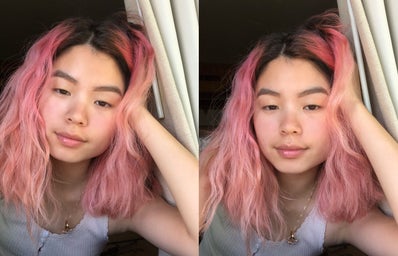Recently I got my hair dyed, not all of it but probably about 80%. The technical term is a Balayage, or a technique used to get a more natural and gradient look in hair. Really besides my roots and few select pieces of hair everything else was dyed. Now this sounds great and trust me, it looks even better, but there is so much that went into this style that I never thought about.
I’ve been getting color in my hair since I was young, opting for blonde highlights before switching to red lowlights. I’ve never been one to stray from this path, but it was time for change. Quarantine had me reassessing a few of my looks and my hair was definitely one I wanted to try something new with. Instead of red or blonde, I opted for rose gold, which I never figured was going to be a lot more work.
Besides the price tags that come along with getting your hair professionally colored, there’s everything that comes after the dying process that needs to be dealt with. A big one for me was finding the right shampoo and conditioner for my hair. Something without sulfates that would end up stripping my hair and its color. But the problem with this is that more sulfate free shampoos that are also for color treated hair, come along with a hefty price tag of $5 to $6 plus for shampoo alone. These bottles also tend to hold less product in them than normal.
There is also the drying process your hair might end up going through. Because I’ve never colored my hair this way it went through more than it usually would. Besides the fact that I had so many split ends that needed to be cut which was already damaging, the bleaching process that it took to lighten my hair on top of the actual coloring process was enough to send my strands into a frenzy. While it isn’t dry in the damaging sense, there is a definite lack of moisture. This is why finding the right products for it are essential. The main goal is trying to wash it with a shampoo that won’t dry it out or strip the color out of it.
How often you wash your hair and how hot your water is can determine how long your color lasts as well. Because of my job and where I live, washing my hair seemed to be a daily thing (I know, not the best), especially with hot water, but that can’t be happening anymore. Regular hair should really only be washed in lukewarm water that’s on the colder side. It helps to keep the scalp from drying out and also tightens the hair follicles (where the root is) and close the cuticles (outer shaft on a hair strand). Colored hair benefits from cold washings by sealing the cuticle and keeping the color in place rather than letting it shed off. Daily washings had to become a thing of the past as well. Overuse of shampoo, sulfate free or not, can strip hair of its natural oils and dry it out quicker, leading to damage. One can avoid daily washings and still looking fresh by using a dry shampoo safe for color treated hair or even just rinsing without shampoo.
Changing some other things in your routine can help with the length of color or even just keeping your hair soft and shiny. Products like hair masks and leave-in conditioners, detangling brushes, and using protection when using heat for styling.
Even with all the work and money that’s gone into my hair this far, I would definitely get the color done again. It gives me a new sense of style and looks great. It was a definite leap of faith with the rose gold color but one that ended up working out well.
Good luck and happy styling!



